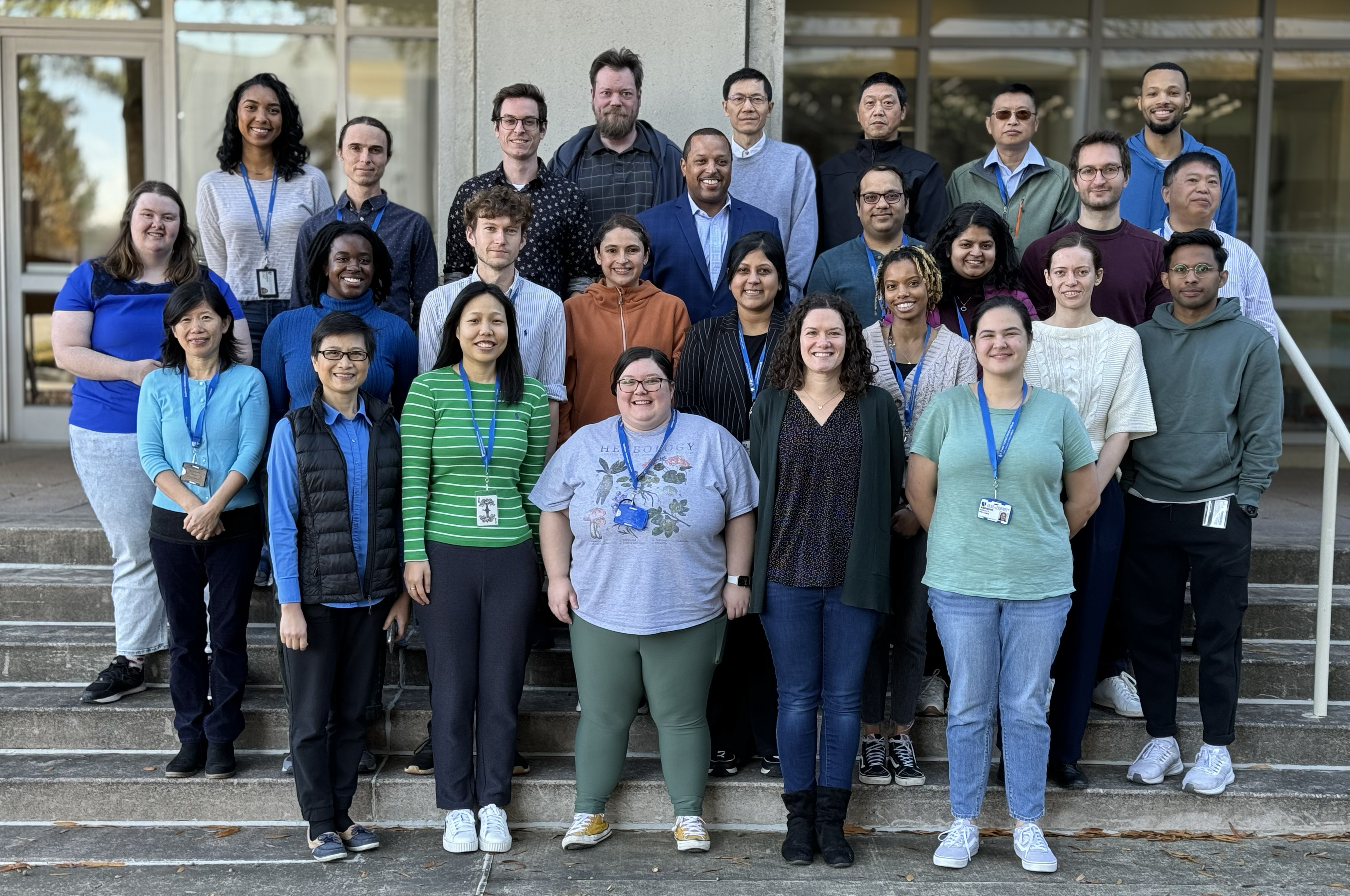The Saunders laboratory aims to understand the immunology of HIV-1 antibodies and the molecular biology of their interaction with HIV-1 envelope (Env) glycoprotein. Our overall goal is to develop protective antibody-based vaccines; therefore, the laboratory has two sections–antibody repertoire analysis and immunogen design. Our research premise is that vaccine-elicited antibodies will broadly neutralize HIV-1 if they can bind directly to the host glycans on Env. However, Env glycans are poorly immunogenic and require specific targeting by a vaccine immunogen to elicit an antibody response.
Anti-glycan HIV-1 antibody biology
The laboratory utilizes single B cell PCR to probe the antibody repertoire during natural infection and after vaccination. Using this technique we identified two monoclonal antibodies from HIV Env vaccinated macaques called DH501 and DH502 that bind directly to mannose glycans and to HIV-1 envelope (Env). We have characterized these antibodies using glycan immunoassays, antibody engineering, and x-ray crystallography to define the mechanisms of Env-glycan interaction by these antibodies. Glycan-reactive HIV antibodies are rarely elicited with HIV-1 vaccination; therefore we have studied the ontogeny of DH501 using longitudinal next generation sequencing and reversion of somatic mutations within the antibody variable regions. DH501 and DH502 antibodies are mostly found in the repertoire as IgG2 and IgM isotypes—similar to known natural glycan antibodies. Therefore we are examining whether vaccines mobilize antibodies from the natural glycan pool that affinity mature to interact with HIV-1 envelope. The results of these studies inform us about the similarities and differences between vaccine-induced glycan-reactive antibodies and known broadly neutralizing HIV-1 antibodies from human natural infection. These comparative studies define the molecular biology of glycan-reactive antibodies as well as determine how close current vaccines are to inducing glycan-dependent broadly neutralizing antibodies.
HIV-1 Env immunogen design
The discovery of lineages of broadly neutralizing antibodies in HIV-infected individuals has provided templates for vaccine design. With knowledge of the antibodies we desire to elicit we can engineer the HIV-1 Env to preferentially bind to those antibodies. We discovered that Man9GlcNAc2 is the glycan preferred by early precursors in broadly neutralizing antibody lineages. We translated this finding into a vaccine design strategy that we have termed “glycan learning.” This approach modifies the glycosylation of HIV-1 Env immunogens to be the optimal glycan type for engagement of the precursor antibody of glycan-reactive broadly neutralizing HIV-1 antibody lineages. The Env glycosylation sites and glycan type are then modified on subsequent Env immunogens to select antibodies that are maturing towards a broadly neutralizing phenotype. We have developed cell culture procedures and purification strategies combined with mass spectrometry analyses to create Env immunogens with specific glycosylation profiles. While the overall goal is to elicit protective neutralizing antibodies in vivo, we use these Env antigens in vitro to investigate the biology of B cell receptor engagement. More specifically, we investigate the effects of various immunogen delivery platforms, such as protein or gold nanoparticles, nucleic acid, or recombinant viral vectors on B cell activation.
Taken together, our research program is an interdisciplinary approach to understanding the molecular biology underlying antibody recognition of glycoproteins in order to produce protective vaccines.
